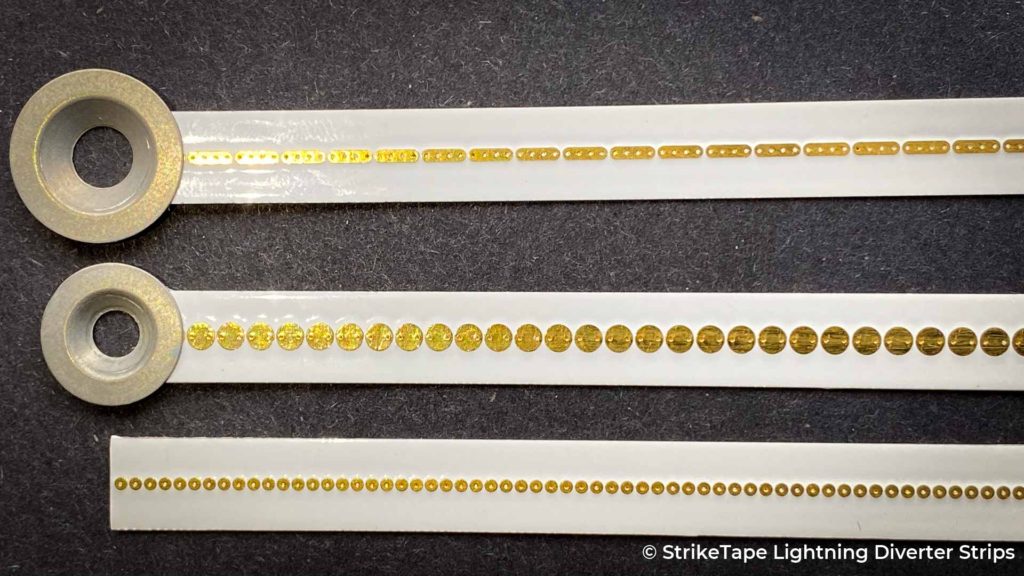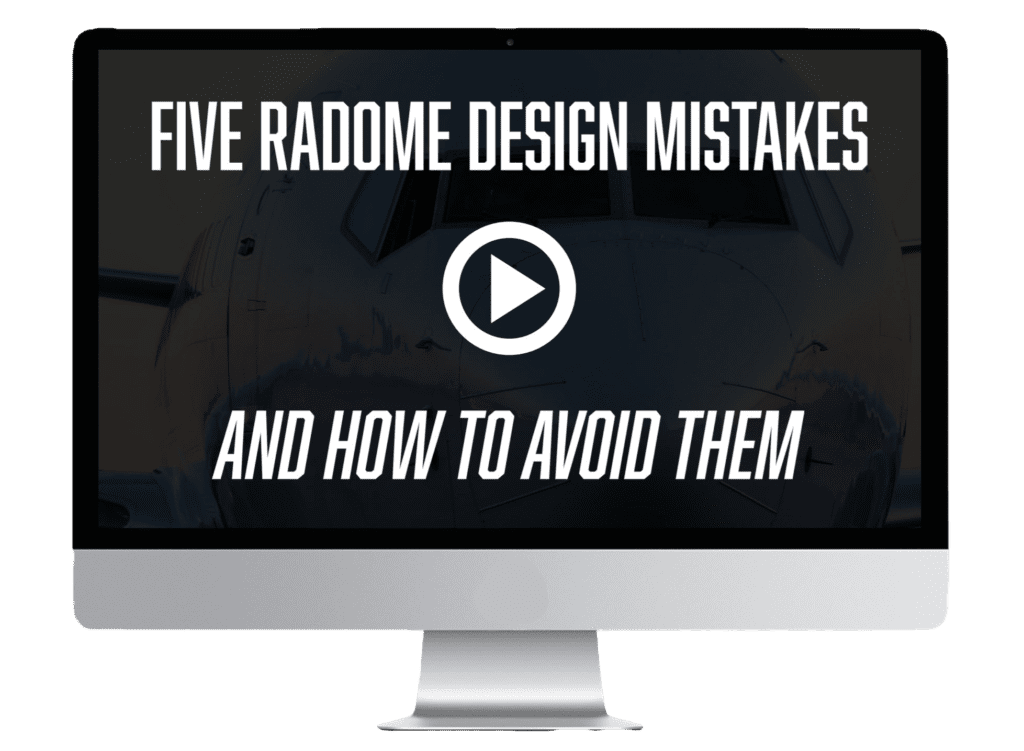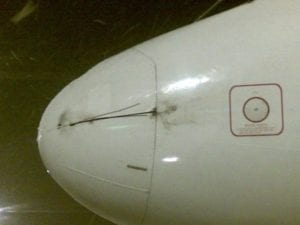An Aerolineas flight headed for Ushuaia, Argentina (near the southernmost tip of Argentina) was struck by lightning on approach to the airport.
The lightning attached to the nose radome, causing damage. Based on the photo taken at the airport in Ushuaia, it appears the white paint around the metal bar lightning diverter is damaged and the bar is melted. The aircraft was taken out of service as the radome required repairs.
Details about the lightning strike can be found in this link to the news article.
When Lightning Strikes an Airplane: Damage and Repairs
In the Aerolineas strike described above, the plane (and everyone on it) was lucky, in that it was on approach to Ushuaia’s runway, just about 22nm before touchdown, when it was struck by lightning. The aircraft received punctures to the fuselage and the nose radome. So while no one on the aircraft was injured, and the plane landed safely, its return flight was cancelled and it required repairs before it could be approved to fly again.
The fact is, aircraft are struck – the general rule is that in normal use, airplanes are struck about once a year. Whether the strikes are large or small, they can weaken parts. The diverter’s job is to direct the energy of the strike away from critical components.
Lightning travels extremely quickly through an aluminum body aircraft, and if the lightning diverter strips do their job, energy from the strike is directed out and away from critical components (like the radome). Still, there’s always the possibility of damage to electrical systems and to the craft’s overall airworthiness.
This is why all components – including lightning diverters – must comply with very specific Federal Aviation Administration (FAA) guidelines.
The Boeing 737 is a complex yet phenomenally successful plane, one that is beloved on so many short and medium-distance routines in the US and abroad. Yet, with millions of flight hours on the 737 piling up, lightning strikes are common. Addressing the routine lightning strikes of commercial airliners (every plane is typically struck once per year) is critical in keeping the fleet efficient and profitabe.
Resources for Designing Lightning Protection Systems and Diverters
For more than 25 years, Weather Guard Lightning Tech has been at the forefront of aircraft lightning strike protection systems design and sales because, quite simply, when it comes to lightning protection, experience and expertise is what keeps planes in the air.

If you’re designing aircraft lightning protection systems for a metal body aircraft or smaller aircraft with a carbon fiber or carbon fiber composite components, these resources may help.
More Lightning Protection Resources
- Important Lightning Protection Regulations and Design Considerations
- Our Help Documentation Page
- How to Comply with FAA 14 CFR 25.581
- How a Segmented Lightning Diverter Protects Radomes and other Metal, Carbon Fiber and Composite Structures on Aircraft (and Wind Turbines)
- StrikeTape Lightning Diverters
- Get in touch and let us help you
Give us a Call Today to Discuss Your Radome Lightning Protection Design
Call or email us today – we love helping radome design engineers.









